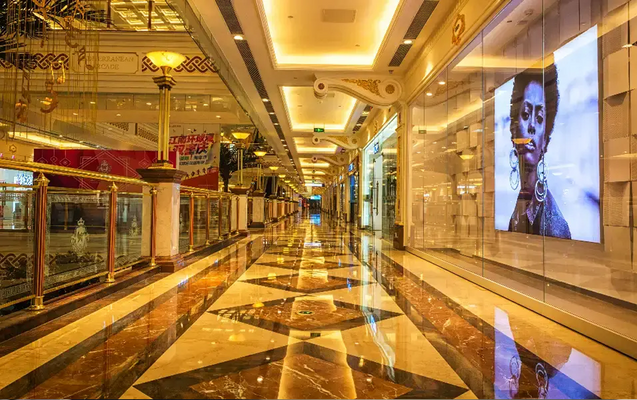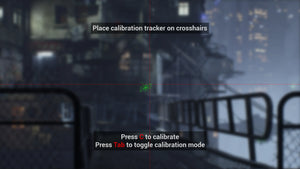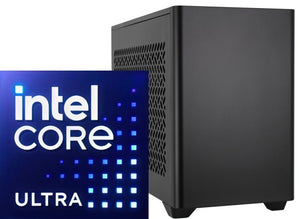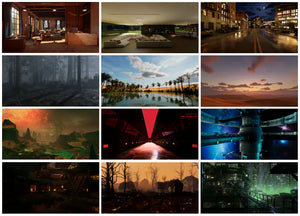How Brands Can Use LED Displays to Create Immersive Experiences

In the fast-evolving world of retail, creating memorable and immersive customer experiences is no longer optional—it’s essential. LED displays and interactive LED walls are among the most powerful tools brands have to transform static storefronts and plain retail spaces into dynamic, engaging environments. This post explores how brands can leverage LED display technology to boost engagement, strengthen brand identity, and ultimately increase sales.
What Are LED Displays & Interactive LED Walls
LED displays = large, high resolution panels made up of many light-emitting diodes. They can show vibrant colours, video, motion graphics, animations, or live content. An interactive LED wall adds elements like touch or gesture responsiveness, allowing customers to engage directly with content. Think motion sensors, touch interfaces, multi-touch gestures, real-time data feeds.
These technologies allow brands to shift from passive displays (just showing content) to active experiences (where visitors participate or immerse in branded environments).
Why Immersive LED Displays Matter for Retail Brands
Here are key benefits, drawn from top examples and best practices:
Practical Use Cases in Retail
To illustrate how brands are (and can) use LED displays and interactive walls in retail, here are several proven and creative applications:
-
Storefront Window Displays
Catch attention from passersby. LED video walls showing high-impact visuals, product reveals, seasonal themes. Interactive installations can even let people outside engage via motion or touch. -
In-Store Feature Walls
Walls inside stores that respond when a customer approaches (proximity sensors), or that allow customers to browse catalogues, switch themes (light, look, colour), or see product stories. -
Virtual Try-On & AR Integration
Combine LED displays with augmented reality—customers try clothing, accessories, makeup virtually, see themselves on large display. Offers convenience and novelty. -
Dynamic Promotions & Live Data
LED screens changing content based on time of day, customer footfall, inventory. Use live social media feeds, or display in-store reviews, or trending products in real time. -
Immersive Brand Narrative Spaces
Spaces built around brand storytelling. E.g. LED displays covering multiple walls or ceilings to immerse customers in a brand universe—heritage, craftsmanship, origin stories. -
Experiential Zones or Pop-ups
Temporary installations or events where immersive LED walls amplify the experience—concerts, product launches, influencer/brand events. These create buzz and social media sharing.
Key Technical & Design Considerations
To ensure LED displays and interactive walls actually deliver immersive experiences (not just expensive screens), brands must plan carefully. Some of the vital considerations:
-
Resolution & Pixel Pitch: For close distance viewing (e.g., inside a boutique), you need fine pixel pitch so visuals are crisp. For large format or viewing from afar, you can allow coarser pitch.
-
Brightness, Contrast & Colour Accuracy: Retail lighting is varied; displays need to compete with ambient light, windows, spotlights. High brightness and good contrast matter.
-
Refresh Rate & Motion Handling: Fast transitions, video, interactive motion require higher refresh rates to avoid flicker, blur.
-
Interactivity & Sensors: Touchscreens, motion detection, gesture control—these add to cost and complexity, but elevate experience. Needs reliable hardware & software.
-
Content Strategy & Management: Having great hardware is only part. Content must be well designed, brand aligned, updated, maybe localized, seasonal. A content management system (CMS) or real-time control helps.
-
Installation, Mounting & Maintenance: LED panels must be well aligned; cooling, power supplies, safety are all relevant. Proper framing/mounting and professional installation ensures longevity.
-
Integration with Other Technologies: Lighting, sound, AR, projection mapping—combining these with LED walls leads to fuller sensory experiences.
Best Practices when Implementing LED Displays in Retail
To get maximum value, brands should follow best practices:
-
Start with clear objectives: e.g. increase dwell time, improve conversion, highlight new product, elevate brand perception.
-
Know your audience: what they expect, what catches their attention, what kind of interaction works (touch vs motion vs gesture).
-
Prototype or pilot: small-scale interactive walls or pop-ups can reveal what works in your context before full roll-out.
-
Ensure content is high quality: visuals, animation, sound (if used) must be polished and on-brand.
-
Monitor & measure: track foot traffic, dwell time, conversion, engagement metrics (touches, interactions), sales lift. Use data to refine.
-
Plan for scalability & future updates: hardware modularity, content flex-capable, supports new tech.
Challenges & How to Overcome Them
It’s not all upside—there are obstacles. But with good planning, these can be mitigated.
|
Common Challenge |
Mitigation Strategies |
|
High Initial Cost |
Take a phased approach; start small; use rental or pop-up models; consider leasing; calculate projected return to justify investment. |
|
Technical Complexity |
Work with experienced integrators; ensure hardware & software support; train staff; build redundancy (spares, fallback content). |
|
Content Overload / Poorly Designed Content |
Focus on storytelling, quality over quantity; keep user experience simple; avoid visual clutter; use UX/UI design best practices. |
|
Maintenance & Downtime |
Use robust hardware; schedule regular maintenance; remote monitoring; ensure warranties and support. |
|
Keeping Up with Trends |
Stay aware of new display technologies, interactive modalities, evolving customer behaviour; invest in modularity. |
Real-World Examples of LED Displays in Retail
Top brands across industries are already leveraging LED walls to transform their retail spaces into memorable destinations.
-
Nike – Uses interactive LED walls in flagship stores to create dynamic product showcases and live storytelling. Customers can see the brand’s history, test shoes virtually, and interact with motion-based screens.
-
Burberry – Their London flagship integrates LED screens and immersive projections to merge digital with physical retail. This enhances luxury storytelling and creates a “digital runway” experience.
-
Adidas – Utilises LED walls for gamified experiences where visitors engage with content and participate in interactive challenges, strengthening both engagement and brand loyalty.
-
Car Showrooms – Automotive brands use giant LED displays to let customers customise cars virtually, view 360° rotations, and explore features in high definition.
-
Pop-Up Stores & Events – Fashion and tech brands use LED displays for short-term activations, creating buzzworthy experiences designed for social sharing and influencer content.
These examples prove that immersive LED retail experiences are not just for aesthetics—they directly influence consumer behaviour, drive social engagement, and build stronger brand affinity.

Designing a Retail Store Layout with LED Walls
For LED displays to truly enhance retail performance, integration with store layout and customer journey is key. Consider these steps:
-
Define Customer Journey Zones: Entry, exploration, engagement, decision. LED walls should support each stage with tailored content.
-
Create Focal Points: Use LED walls as hero features—entryway screens, feature walls, ceiling installations—to draw attention immediately.
-
Blend Digital & Physical: LED screens shouldn’t feel disconnected. Pair with physical products, lighting, and décor to create seamless storytelling.
-
Enable Interactivity at Key Moments: Place touch-enabled or motion-responsive walls near product demo areas or fitting rooms.
-
Incorporate Sensory Layers: Combine visuals with sound, AR, and even haptics where possible to amplify immersion.
This holistic approach turns LED displays from simple signage into a retail ecosystem.
The Future of Immersive Retail with LED Walls
Looking ahead, LED display technology is evolving rapidly. Expect to see:
-
Smarter Interactivity – AI and machine learning to personalise content in real time (e.g., product recommendations triggered by demographics or behaviour).
-
Seamless AR/VR Integration – LED walls serving as portals into extended reality shopping experiences.
-
Sustainability Enhancements – Energy-efficient, modular displays that reduce environmental impact while maintaining high performance.
-
Hybrid Shopping – Blending e-commerce and physical retail with LED screens showing online reviews, social proof, or live online-offline shopping events.
Brands that adopt these innovations early will stand out in a competitive retail landscape.
Turning Shoppers into Brand Advocates
Immersive retail isn’t just about technology—it’s about creating memorable brand moments that turn customers into advocates. LED displays and interactive LED walls allow brands to:
-
Tell powerful stories
-
Encourage engagement and participation
-
Enhance product discovery
-
Drive sales and loyalty
As customers increasingly expect experiences (not just transactions), investing in LED technology is no longer a luxury—it’s a necessity. Are you ready to transform your retail space with LED walls and immersive display technology?
Contact Us today to learn how our team can design, install, and manage cutting-edge LED solutions that engage your customers and elevate your brand experience.






